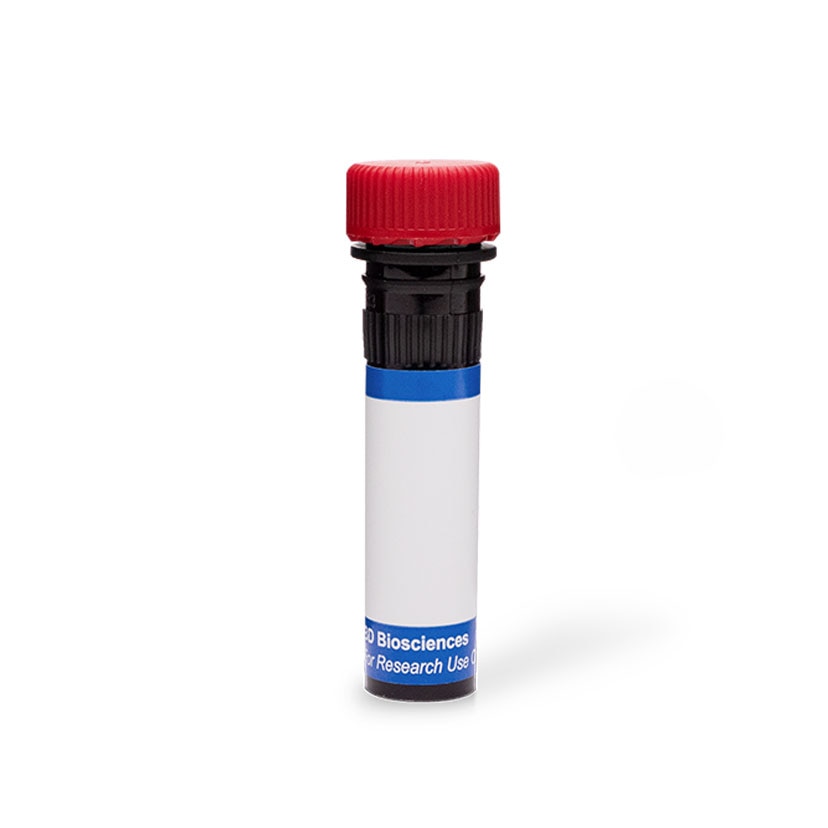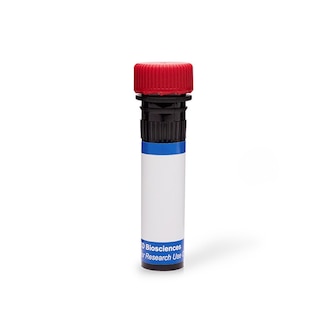-
Reagents
- Flow Cytometry Reagents
-
Western Blotting and Molecular Reagents
- Immunoassay Reagents
-
Single-Cell Multiomics Reagents
- BD® OMICS-Guard Sample Preservation Buffer
- BD® OMICS-One Protein Panels
- BD® AbSeq Assay
- BD® Single-Cell Multiplexing Kit
- BD Rhapsody™ ATAC-Seq Assays
- BD Rhapsody™ Whole Transcriptome Analysis (WTA) Amplification Kit
- BD Rhapsody™ TCR/BCR Next Multiomic Assays
- BD Rhapsody™ Targeted mRNA Kits
- BD Rhapsody™ Accessory Kits
-
Functional Assays
-
Microscopy and Imaging Reagents
-
Cell Preparation and Separation Reagents
-
Training
- Flow Cytometry Basic Training
-
Product-Based Training
- BD Accuri™ C6 Plus Cell Analyzer
- BD FACSAria™ Cell Sorter Cell Sorter
- BD FACSCanto™ Cell Analyzer
- BD FACSDiscover™ A8 Cell Analyzer
- BD FACSDiscover™ S8 Cell Sorter
- BD FACSDuet™ Sample Preparation System
- BD FACSLyric™ Cell Analyzer
- BD FACSMelody™ Cell Sorter
- BD FACSymphony™ Cell Analyzer
- BD LSRFortessa™ Cell Analyzer
- Advanced Training
-
- BD® OMICS-Guard Sample Preservation Buffer
- BD® OMICS-One Protein Panels
- BD® AbSeq Assay
- BD® Single-Cell Multiplexing Kit
- BD Rhapsody™ ATAC-Seq Assays
- BD Rhapsody™ Whole Transcriptome Analysis (WTA) Amplification Kit
- BD Rhapsody™ TCR/BCR Next Multiomic Assays
- BD Rhapsody™ Targeted mRNA Kits
- BD Rhapsody™ Accessory Kits
-
- BD Accuri™ C6 Plus Cell Analyzer
- BD FACSAria™ Cell Sorter Cell Sorter
- BD FACSCanto™ Cell Analyzer
- BD FACSDiscover™ A8 Cell Analyzer
- BD FACSDiscover™ S8 Cell Sorter
- BD FACSDuet™ Sample Preparation System
- BD FACSLyric™ Cell Analyzer
- BD FACSMelody™ Cell Sorter
- BD FACSymphony™ Cell Analyzer
- BD LSRFortessa™ Cell Analyzer
- United States (English)
-
Change country/language
Old Browser
This page has been recently translated and is available in French now.
Looks like you're visiting us from {countryName}.
Would you like to stay on the current country site or be switched to your country?
BD Pharmingen™ PE Rat Anti-Mouse CD274
Clone MIH5 (RUO)

Upregulation of B7-H1 expression on activated splenic T lymphocytes. C57BL/6 splenocytes, unstimulated (left panels) or stimulated for three days with immobilized anti-mouse CD3e mAb 145-2C11 (Cat. no. 553057, right panels), were stained with FITC-conjugated anti-mouse CD4 mAb GK1.5 (Cat. no. 553729) and either PE-conjugated Rat IgG2a, κ isotype control mAb B39-4 (Cat. no. 557076, far left and center-right panels) or PE-conjugated anti-mouse B7-H1 mAb MIH5 (center-left and far right panels). Flow cytometry was performed on a BD FACSCalibur™ flow cytometry system.



Upregulation of B7-H1 expression on activated splenic T lymphocytes. C57BL/6 splenocytes, unstimulated (left panels) or stimulated for three days with immobilized anti-mouse CD3e mAb 145-2C11 (Cat. no. 553057, right panels), were stained with FITC-conjugated anti-mouse CD4 mAb GK1.5 (Cat. no. 553729) and either PE-conjugated Rat IgG2a, κ isotype control mAb B39-4 (Cat. no. 557076, far left and center-right panels) or PE-conjugated anti-mouse B7-H1 mAb MIH5 (center-left and far right panels). Flow cytometry was performed on a BD FACSCalibur™ flow cytometry system.


Upregulation of B7-H1 expression on activated splenic T lymphocytes. C57BL/6 splenocytes, unstimulated (left panels) or stimulated for three days with immobilized anti-mouse CD3e mAb 145-2C11 (Cat. no. 553057, right panels), were stained with FITC-conjugated anti-mouse CD4 mAb GK1.5 (Cat. no. 553729) and either PE-conjugated Rat IgG2a, κ isotype control mAb B39-4 (Cat. no. 557076, far left and center-right panels) or PE-conjugated anti-mouse B7-H1 mAb MIH5 (center-left and far right panels). Flow cytometry was performed on a BD FACSCalibur™ flow cytometry system.




Regulatory Status Legend
Any use of products other than the permitted use without the express written authorization of Becton, Dickinson and Company is strictly prohibited.
Preparation And Storage
Product Notices
- Since applications vary, each investigator should titrate the reagent to obtain optimal results.
- Please refer to www.bdbiosciences.com/us/s/resources for technical protocols.
- Caution: Sodium azide yields highly toxic hydrazoic acid under acidic conditions. Dilute azide compounds in running water before discarding to avoid accumulation of potentially explosive deposits in plumbing.
Data Sheets
Companion Products



Recently Viewed
The MIH5 monoclonal antibody specifically binds to CD274, also known as B7-H1 or PDL1, a 43-kDa glycoprotein encoded by the Pdcd1lg1 gene of the B7 family of the Ig superfamily. Pdcd1lg1 mRNA is expressed in more tissues than other members of the B7 family; transcripts are found in lymphoid tissues and many, but not all, non-lymphoid tissues. The protein has been detected at low levels on resting peripheral T and B lymphocytes, macrophages, and dendritic cells. B7-H1 mRNA and protein expression are upregulated upon activation of T and B cells, macrophages, dendritic cells, and epidermal keratinocytes by a variety of stimulatory factors. B7-H1's receptor, PD-1, contains an ITIM (Immunoreceptor Tyrosine-based Inhibitory Motif) on its intracytoplasmic region and is expressed on activated B and T lymphocytes, suggesting that B7-H1-PD-1 interaction may be involved in the negative regulation of immune responses. The second PD-1 ligand, B7-DC (PD-L2), is also a member of the B7 family of the Ig superfamily. Furthermore, B7-H1 may participate in positive immunoregulation, or costimulation of T cells, through an additional receptor, which is not PD-1 and distinct from the alternate receptor for B7-DC. The MIH5 antibody blocks the binding of PD-1-Ig to B7-H1 transfectants.

Development References (9)
-
Ansari MJ, Salama AD, Chitnis T, et al. The programmed death-1 (PD-1) pathway regulates autoimmune diabetes in nonobese diabetic (NOD) mice. J Exp Med. 2003 July; 198(1):63-69. (Biology). View Reference
-
Carreno BM, Collins M. The B7 family of ligands and its receptors: New pathways for costimulation and inhibition of immune responses. Annu Rev Immunol. 2002; 20:29-53. (Biology). View Reference
-
Dong H, Chen L. B7-H1 pathway and its role in the evasion of tumor immunity. J Mol Med. 2003 May; 81(5):281-287. (Biology). View Reference
-
Freeman GJ, Long AJ, Iwai Y, et al. Engagement of PD-1 immunoinhibitory receptor by a novel B7 family member leads to negative regulation of lymphocyte activation. J Exp Med. 2000; 192:1027-1034. (Biology). View Reference
-
Liu X, Gao JX, Wen J, et al. B7DC/PDL2 promotes tumor immunity by a PD-1-independent mechanism. J Exp Med. 2003; 197:1721-1730. (Biology). View Reference
-
Tamura H, Dong H, Zhu G, et al. B7-H1 costimulation preferentially enhances CD28-independent T-helper cell function. Blood. 2001; 97(6):1809-1816. (Biology). View Reference
-
Tsushima F, Iwai H, Otsuki N, et al. Preferential contribution of B7-H1 to programmed death-1-mediated regulation of hapten-specific allergic inflammatory responses. Eur J Immunol. 2003; 33(10):2773-2782. (Biology). View Reference
-
Wang S, Bajorath J, Flies DB, Dong H, Honjo T, Chen L. Molecular modeling and functional mapping of B7-H1 and B7-DC uncouple costimulatory function from PD-1 interaction. J Exp Med. 2003; 197:1083-1091. (Biology). View Reference
-
Yamazaki T, Akiba H, Iwai H, et al. Expression of programmed death 1 ligands by murine T cells and APC. J Immunol. 2002; 169(10):5538-5545. (Immunogen). View Reference
Please refer to Support Documents for Quality Certificates
Global - Refer to manufacturer's instructions for use and related User Manuals and Technical data sheets before using this products as described
Comparisons, where applicable, are made against older BD Technology, manual methods or are general performance claims. Comparisons are not made against non-BD technologies, unless otherwise noted.
For Research Use Only. Not for use in diagnostic or therapeutic procedures.
